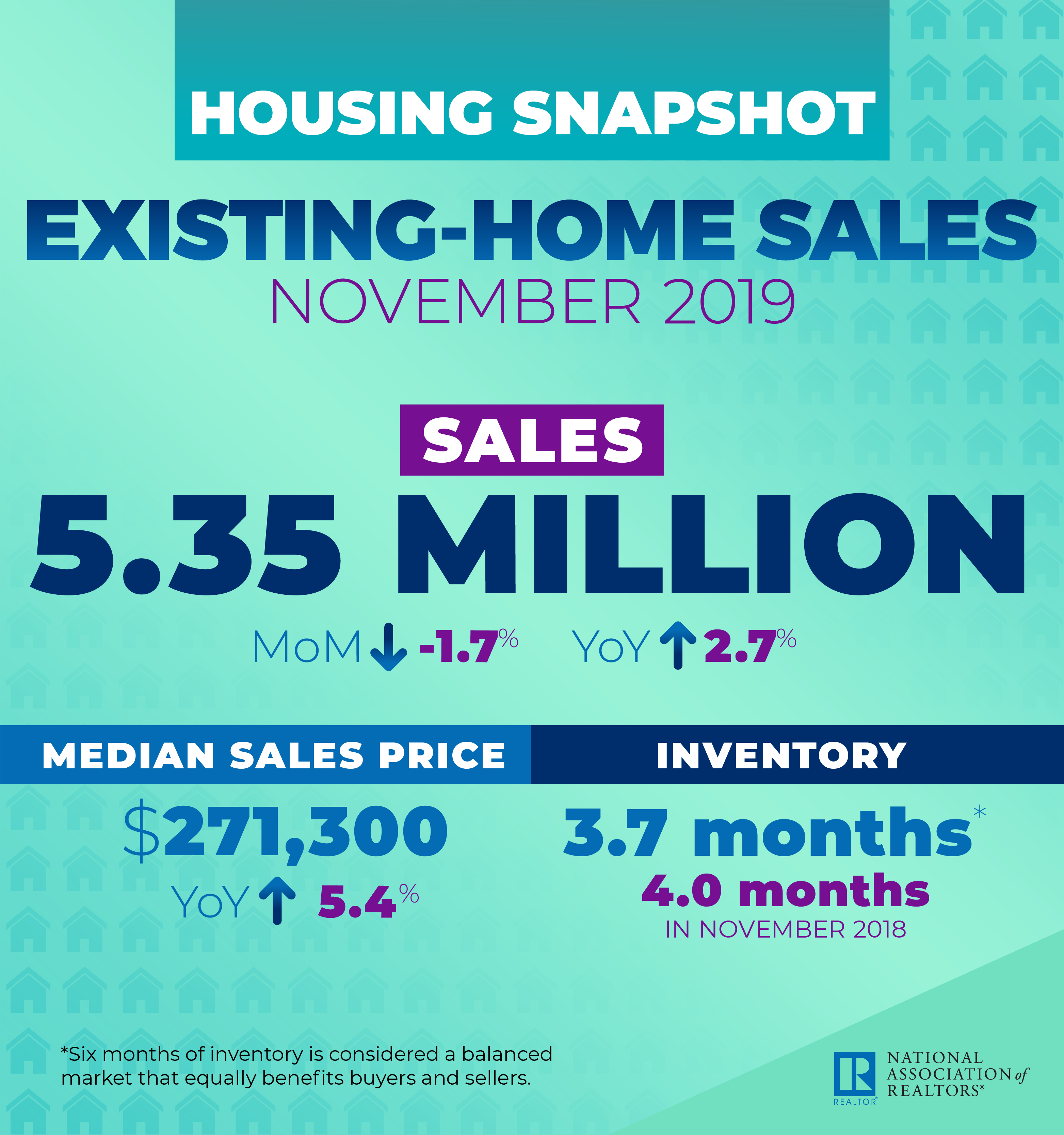‘Will Be Choppy When Inventory Levels Are Low’
After gaining ground in October, existing-home sales slid, according to the latest National Association of REALTORS® report. November’s seasonally adjusted annualized rate of sales totaled 5.35 million, a 1.7 percent decline month-over-month, but a 2.7 percent increase year-over-year.

The amount of existing for-sale homes in November totaled 1.64 million, down 7.3 percent from the month prior and 5.7 percent year-over-year.
Across all house types (single-family, condo, co-op and townhome), the median price was $271,300—a 5.4 percent increase year-over-year, according to NAR’s report. The median price for sales in the single-family space was $274,000, while the condo median was $248,200.
By region:
Midwest
Existing-Home Sales: 1.32 million (+1.5% YoY)
Median Price: $209,700 (+5.9% YoY)
Northeast
Existing-Home Sales: 700,000 (-1.4% YoY)
Median Price: $301,700 (+3.9% YoY)
South
Existing-Home Sales: 2.24 million (+3.7% YoY)
Median Price: $234,400 (+4.8% YoY)
West
Existing-Home Sales: 1.09 million (+4.8% YoY)
Median Price: $410,700 (+7.1% YoY)
Currently, inventory is at a 3.7-month supply, the report shows. In November, the average listing was on the market for 38 days, four days less than the previous year. Forty-five percent of homes were on the market for less than one month.
Of November’s seasonally adjusted annualized rate of sales, 4.79 million were single-family, and condo and co-op sales totaled 560,000. Twenty percent of sales were all-cash, and 16 percent by individual investors or second homebuyers. Two percent were distressed. First-time homebuyers comprised 32 percent of sales, aligning with the overall trend for the year, 33 percent.
“Sales will be choppy when inventory levels are low, but the economy is otherwise performing very well with more than 2 million job gains in the past year,” Lawrence Yun, chief economist at NAR, says.
The association hosted the NAR Forecast Summit recently, which addressed the economy’s path, as well as critical housing indicators.
“The consensus was that mortgage rates may rise, but only incrementally,” says Yun. “I expect to see home-price affordability improvements, too. This year we witnessed housing costs grow faster than income, but the expectation is for prices to settle at a more reasonable level in the coming year, in line with average hourly wage growth of 3 percent on a year-over-year basis.”
“I would encourage would-be buyers to take advantage of historically-low mortgage rates, which make a home purchase more affordable, particularly when home prices are rising,” NAR President Vince Malta says.
According to Freddie Mac, the average 30-year fixed mortgage rate remains steady, at 3.73 percent (at press time).
“New-home construction seems to be coming to the market, but we are still not seeing the amount of construction needed to solve the housing shortage,” adds Yun. “It is time for builders to be innovative and creative, possibly incorporating more factory-made modules to make houses affordable rather than building homes all on-site.”
For more information, please visit www.nar.realtor.












